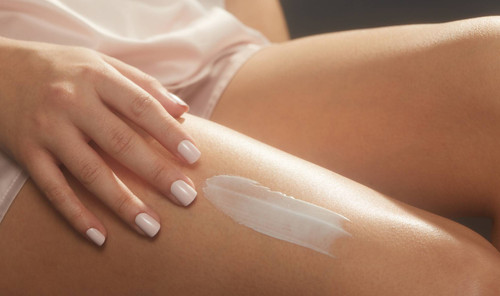5 Skincare Tips to Reduce the Risk of Chafing
Posted by Jack Miller on 20th May 2020
Chafing is a miserable condition to suffer from! Anti chafing shorts can offer an inconstant solution to the problem, but there are a number of additional measures people can take to ensure their skin stays in pristine condition. Take a look at five skincare tips that can help keep skin in those vulnerable areas looking (and feeling) fantastic.
1. Wash regularly!
It sounds obvious, but regular washing is essential to keep skin in good condition. The groin area is almost invariably covered by clothing, which means it's all too easy for sweat to build up. Stale sweat provides a perfect breeding ground for bacteria and or yeast infections. These may cause the skin to itch, crust, weep or split. Not only are these symptoms unpleasant in their own right, they also leave the chafed skin raw and sore, meaning that any anti chafing measures may still be uncomfortable. Use mild soap and water at least twice a day, as well as after exercise, to keep skin clean.
2. Pat dry
Rubbing with a towel causes skin friction which can lead to skin becoming inflamed. Inflamed skin can become uncomfortable, as well as being vulnerable to infections. After washing the skin around the groin (or other delicate skin, such as the face), gently pat with a soft, absorbent towel to remove excess moisture. Moisture wicking clothing (clothing with a material that's designed to transfer sweat away from the body, rather than leaving it on the skin's surface) also helps to keep skin dry. Anti chafing thigh bands are one of the best measures individuals can take to help the inner thighs stay dry.
3. Keep hydrated
There are lots of reasons why staying hydrated is important: maintaining healthy skin is one of them! Dehydration can lead to sweat forming salt crystals on the skin, as it becomes more concentrated. Obviously salt is a powerful skin irritant, leading to itching and dryness, which ultimately causes discomfort, and is ultimately the cause of a chafing rash. In the longer term, chronic dehydration can cause skin health to deteriorate, meaning it's more prone to infections.
4. Moisturise
The purpose of moisturising is to replace oils which have been lost from the skin. Washing the skin strips away natural oils. Using a good moisturiser helps skin to stay supple and strong. The skin is a natural barrier to all kinds of germs and infections: regular moisturising helps it stay intact.
5. Wear clothing that fits correctly
Although the inner thigh is a particularly vulnerable point at which chafing is likely to occur, chafing can also happen elsewhere on the leg, in the groin crease, on the buttocks or anywhere that there is badly fitting, overly tight clothing. Anti chafing remedies are great for protecting the inner thighs, but care must be taken to make sure clothing doesn't rub on any part of the body. Luckily, modern sportswear is specifically designed to minimise the risk of chafing.
Get in touch to find out more about the benefits of preventative chafing treatment to help keep skin in great shape.

